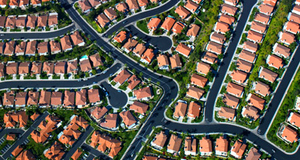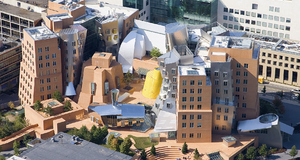From Discussions VOL. 10 NO. 1South Korea's Sustainable Urban Planning and Environmental TechnologyUbiquitous City ConceptSustainable development is one of the facets of the Ubiquitous City, or U-city, concept. The main goal of the U-city is "to create a built environment where any citizen can get any services, anywhere, and anytime through any ICT (information and communication technology) devices" (Lee et al., 2008). The complex networking of digital connections will provide easy, highspeed access to intelligent services and information from anywhere within the city, improving urban infrastructure of technology can shape the lifestyles of urban residents and therefore promote eco-friendly and environmentally conscious mindsets of urban residents. Before iterating the environmental impact of the U-city, it is important to discuss some of the technologies involved with it and the implications in the future of sustainable urban living and planning. The focal point of ubiquitous computing is the high-speed wireless networking capabilities between buildings and in the city. This establishes a giant virtual network in which information can be accessed freely, with services provided digitally to wireless devices, such as smartphones and laptops. The most encompassing of these technologies is possibly the broadband convergence network, or BcN, which is the "backbone of ubiquitous computing services" at speeds from 50 Mbps to 100 Mbps, or about 50 times faster than conventional internet services (Lee et al., 2008). Other technologies stem from the extensive high-speed internet network, such as the ubiquitous sensor network (USN) and location based services (LBS). The USN allows for any devices, wired or wireless, the ability to access information from other devices or computing devices embedded within the environment.One project that takes advantage of the high internet development rate of Seoul is the Personal Travel Assistant system. The PTA service delivers realtime information about public transportation, such as routes with the least amount of carbon emissions, green transportation arrival times, and other ecofriendly options This project aims to reduce urban congestion, one of the greatest problems that large cities in South Korea face. Urban congestion is a cause, and in some cases a result, of other urban problems such as the smog effect, asthma in younger children, high carbon emissions level, and a decline in the quality of life. Through the extensive PTA service which is a part of the ICT system, some of these problems will be alleviated in the long run by changing the behavior of urban dwellers and their perspective on carbon emissions. PTA is not one of the mechanisms to tackle urban sustainability directly, but other technologies are in development in order to reduce carbon emissions of tall building and to organize the city in a more efficient way that would benefit both the residents and nature. Not only does the U-city concept address the issue of urban sustainability, it focuses on making the ecofriendly lifestyle more accessible to urban residents by providing high-speed services and amenities through digital means. It embodies the characteristic of the ideal futuristic city in which the lives of people, as well as the health of the environment, are improved simultaneously, whereas in the past the environment was exploited for Seoul, it should be relatively easy to implement it in other major cities, creating a nation-wide high-speed commute and the ease with which the scientists, engineers, and business leaders can access information to improve the environment and lives of people is possible through cutting-edge technology (Kim, 2009). Technology and Waste ManagementSo far, various methods of sustainable urban planning have been examined. Of the many pollutants that are produced in large cities, solid wastes require the most energy and time to sort and dispose of. Highincome nations in East Asia, such as Japan, Hong Kong, and South Korea, with GDP per capita ranging from 23,331 to 37,385 USD, produce more wastes with smaller biodegradable composition than countries with lower GDP such as India and Vietnam (Shekdar, 2008). With the growing economy come bigger problems; higher income nations are now seeking ways to eliminate landfills and push for reduction in waste generation rather than trying to accommodate for the consequences of high consumption. As a part of the green infrastructure, ecofriendly waste management is now possible using the highest technology. Municipal solid waste, or MSW, is a byproduct of human daily life that is now being addressed by individual municipalities in South Korea. The composition of MSW varies greatly, but much of it is combustible into ash, while non-combustible materials such as glass and metals are shredded and recycled. The autonomy of each municipality in South Korea allows for local governments to seek waste management systems that meet their specific needs. Kwangmyung City exemplifies the autonomic municipality, which utilizes high-end technology to improve the lives of its citizens and reduces MSW in a way that benefits the environment as well as the local government. The construction of the waste-to-energy incinerator in Kwangmyung was initially met with opposition from the citizens and the neighboring cities due to "mutual distrust" by "alienated people who never received such proposals" (Kim, 2002). Despite the contentious beginning in 1999, the incinerator has been used as a model because Kwangmyung was the first municipality to incorporate it into its waste management system. Waste-to-energy incinerators work by burning MSW in extremely high temperatures of up to 2000° F. The waste volume after incineration is reduced by 90 percent and CO emissions of 15 to 40 ppm ("Traditional 'Waste to Energy' Plants"). These incinerators generate about 2,816 megawatts per hour of electrical power, converting large volumes of trash into useable electricity. However, the burning process still produces some carbon emissions. In order to alleviate the amount of greenhouse gases emitted from the facilities, technologies are in place in modern incinerators to control the amount of pollutants being release into the atmosphere. Furthermore, the "flue gas" resulting from burning wastes is cleaned of dust, heavy metals, gaseous acids, NO2, and dioxins through several steps before being released (Nilsson, 2006). Denmark has developed a very strong system of MSW treatment through waste-to-energy methods, and Kwangmyung is on its way to following a similar model. The incinerators are much more eco-friendly and sustainable alternatives to combustion by oil and fossil fuel as well as landfills. Reducing the number of landfills is an expense task that higher-income countries are currently undertaking. This approach requires investing in more modern waste management methods, as well as changing the behavior of the consumers. Coupled with U-city, other major cities in South Korea can follow Kwangmyung's example in using ecofriendly methods of disposing wastes in an environmentally responsible manner. ConclusionAs South Korea's economic standing in the world rises, so does its environmental responsibility. High consumerism, lack of available land, and rapid urbanization, among others, are contributors to environmental problems in urban areas. Heavy development has enabled South Korea to catch up just in time with the global demands of the 21st century, at the cost of environmental health. However, the nation is progressively moving towards green development along with the rest of the globalized world. Landscape character assessment is a useful approach in preserving the health of the environment surrounding the city, such as forests and biodiversity-rich preserving the health of fringes surrounding cities, but overlooks other human impacts. The U-city approach to sustainable urban development uses cutting edge technology to improve the lives of urban dwellers by reducing congestion and the stress associated with living in a densely populated area. Through high-speed internet available in every aspect of the city, urban residents can access information about green transportation and carbon footprints anywhere and at any time. The U-city concept therefore shapes the behavior of urban dwellers and enables ecofriendly urban lifestyle a more accessible possibility. Seoul is currently taking small steps to implement the U-city model and the city is projected to expand successfully in the near future. Finally, South Koreans have taken a step towards eco-friendly waste management with the exemplary implementation of a modern waste-to-technology incinerator in a metropolitan resulting from burning MSW. Further development of modern waste management technology in urban areas will greatly reduce carbon emissions and eliminate the need for landfills. The three primary methods discussed in this from scientists and policymakers that are concerned with the future of environmental conservation as well as the well-being of not only urban dwellers, but also citizens of the entire world. AcknowledgementsI would like to thank Dr. Peter Yang and Dr. Cameron Strathman in providing helpful feedback and primary sources during the research process. Their enthusiasm and willingness to give their time has been greatly appreciated. References
Suggested Reading from Inquiries Journal
Inquiries Journal provides undergraduate and graduate students around the world a platform for the wide dissemination of academic work over a range of core disciplines. Representing the work of students from hundreds of institutions around the globe, Inquiries Journal's large database of academic articles is completely free. Learn more | Blog | Submit Latest in Environmental Studies |

















